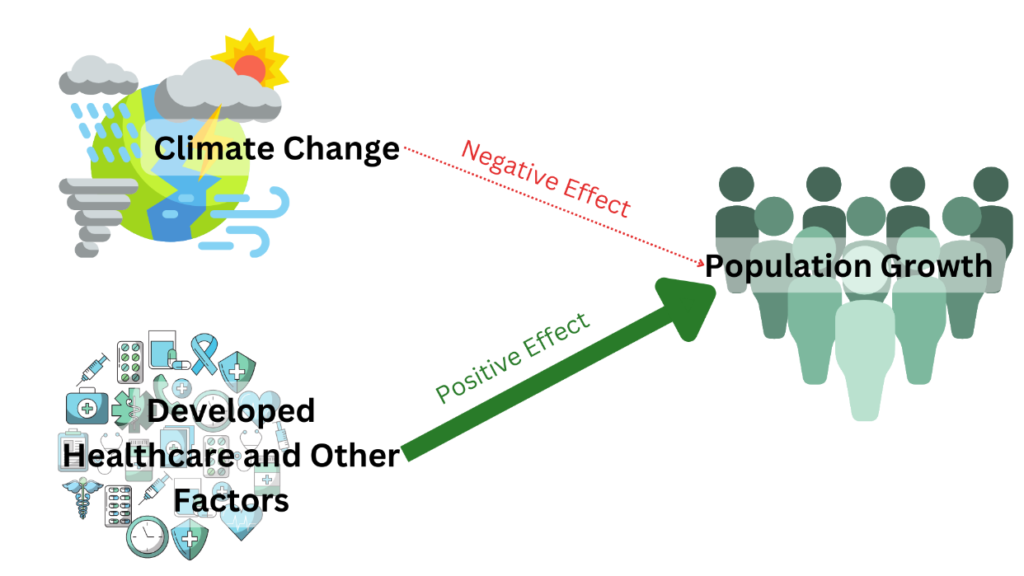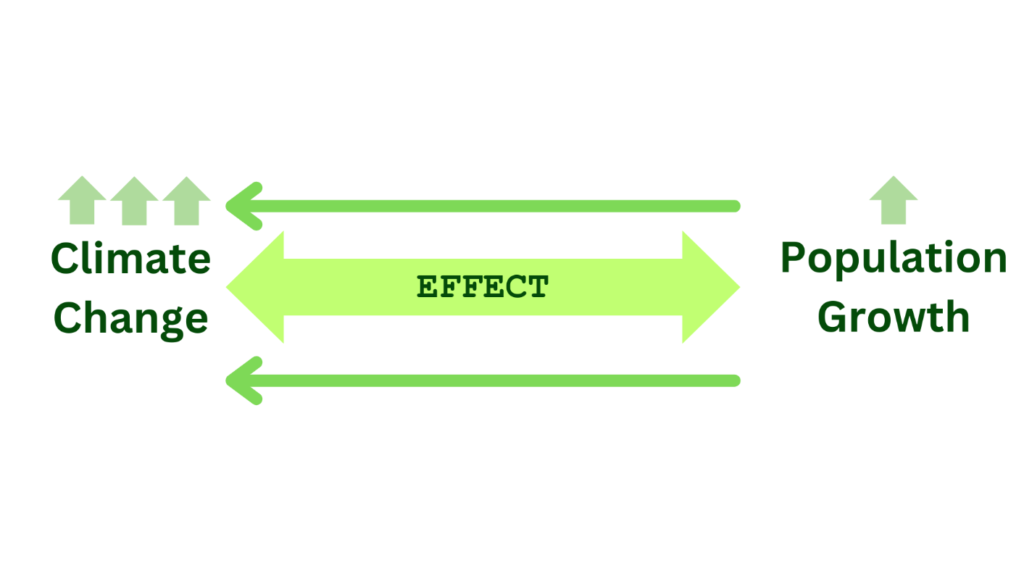Physical Address
23,24,25 & 26, 2nd Floor, Software Technology Park India, Opp: Garware Stadium,MIDC, Chikalthana, Aurangabad, Maharashtra – 431001 India
Physical Address
23,24,25 & 26, 2nd Floor, Software Technology Park India, Opp: Garware Stadium,MIDC, Chikalthana, Aurangabad, Maharashtra – 431001 India

Climate change skepticism and climate change denial are happening around the world every day. These terms refer to denial, dismissal, or unwarranted doubt of scientific consensus on the rate and extent of global warming, its significance, or its connection to human behavior and existence in whole or in part.
A recent point of climate change skeptics and deniers is that climate change is a scam and that if climate catastrophe is true, there is no way to increase the population.

The Climate Fact Checks team decided to fact-check this.
FACT CHECK
Human Population
The human population is the total number of individuals living in a particular geographic area at a given time. Every second, the human population changes. Here for every detail on the global human population right now. Mostly, births in the world are higher than deaths. So, the world population shows a higher propensity towards growing up.
Historically, human population growth has been relatively slow but has accelerated dramatically in the past few centuries. In 2023, the human population overstepped the limit of 8 billion. And it is predicted by specialists that the limit of 9 billion will be overstated in 2037 and the limit of 10 billion population in 2058. Here for more about human population growth in the present world.
With the limited resources on the planet, higher population growth creates a critical situation in the world. Sustainable development and sustainable resource use have been harmed by population growth. So, it is not a 100% good situation for our planet.
Should the Population Go Down with Climate Change?
Climate change can have significant impacts on human population growth. Climate change causes many disturbances in population growth.
With the influence of climate change, severe natural disasters such as floods, hurricanes, and drought can occur more frequently. These events can displace communities, forcing people to migrate or become refugees. This displacement can threaten population growth in these areas by putting a strain on resources and infrastructure.
Climate change affects agricultural productivity, causing crop failures, reducing yields, and increasing pests and diseases. This can lead to food shortages and raise the price of food products, resulting in malnutrition and hunger. Moreover, changing rainfall patterns and rising temperatures can lead to food scarcity, further exacerbating food and water insecurity. These issues can impact population growth by affecting fertility and child mortality rates.
Climate change contributes to the spread of vector-borne diseases like malaria, dengue fever, and water-borne illnesses. Increased temperatures and extreme weather events can also worsen air quality and trigger respiratory problems. These health impacts can decrease overall population growth and increase mortality rates, especially in vulnerable populations.
Climate change can lead to economic instability, particularly in regions heavily relying on climate-sensitive industries like agriculture, fisheries, and tourism. These economic disruptions can indirectly affect population growth by affecting livelihoods, employment opportunities, and quality of life.
Why is the Population Still Growing, though the Climate Keeps Changing?
The climate is not the only factor that affects population growth. Several factors contribute to ongoing population growth despite the presence of climate change.
Over the past century, significant advancements in healthcare, sanitation, and access to clean water have led to a decline in global mortality rates. This has resulted in increased life expectancy, lower child mortality rates, and stillbirths leading to population growth.
While fertility rates have declined globally, many regions still have high birth rates, particularly in developing countries. Cultural, economic, and social factors and limited family planning and education access can contribute to high birth rates, leading to population growth.
A significant proportion of the global population is in the reproductive age group, contributing to population growth even with relatively low fertility rates. This is known as the ‘youth bulge’ phenomenon and is particularly prevalent in regions with high population growth rates.
These factors affect the birth rates and death rates directly.

CBR – Crude Birth Rate (Number of live births per 1000 people in a population in a given year)
CDR – Crude Death Rate (Number of deaths per 1000 people in a population in a given year)
The above facts, commonly found now with the developed health sector and technology, have increased the CBR and decreased the CDR. The effect of the above factor and advanced health and technology is more significant than the effect of climate change on the population.
While climate change has various impacts on the human population, it does not directly stop population growth. The effect of climate change is indirect, as mentioned above; consequently, it affects food security, displacement, health, and conflict. Anyway, the impact of health and technological development in the world on death and birth rates is higher than climate change’s effect.
This doesn’t mean that climate change is a lie. It means the global health and technological sectors and new inventions relative to medicine do a great job and successfully combat challenges to the health sector. Here is archived for more on improving birth rates within the healthcare system in the developed world.

Connection Between Population Pressure and Climate Change
Population growth has been a challenge to keeping up a sustainable world. A higher population growth rate contributes to climate change by higher greenhouse gas emissions and global warming.
Famous English scientist James Lovelock once said, “Those who fail to see that population growth and climate change are two sides of the same coin are either ignorant or hiding from the truth. These two huge environmental problems are inseparable, and to discuss one while the other is irrational.”
So, more than climate change can take control of population growth, population growth has claimed the right to control climate change.

Here is an article on how the human population contributes to climate change in Climate Fact Checks.
CONCLUSION
Population growth is speedy and ordinary in the present world. The population growth rate is negatively impacted by climate change. But that effect is subsided by the support from the development of healthcare, technology, and other factors towards the population.
So, though climate catastrophe is natural, its effect on human population growth is not sharply visible or easily defined.
But Population growth can thoroughly affect climate change. So, a higher population growth rate can be considered a contributor to climate change.
If you have any queries or come across suspicious content related to climate change or the environment and want us to verify them for you, then send them to us on our WhatsApp hotline: +917045366366
-With inputs from Mihiri Saparamadhu–